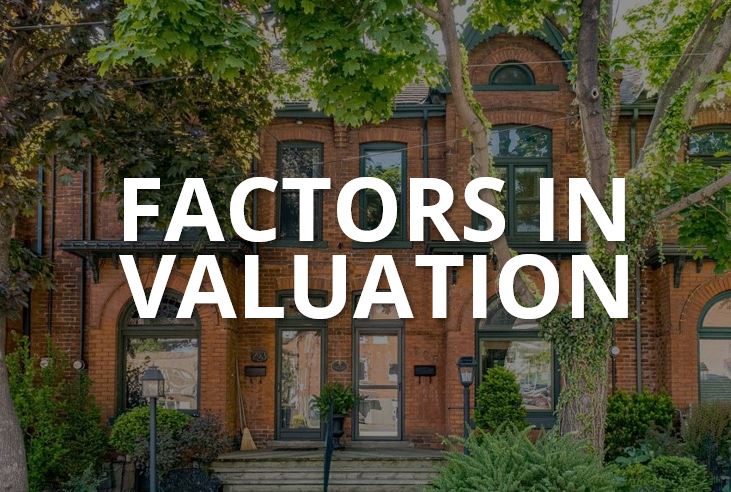How do appraisers arrive at a valuation of your home?
We’ve talked before about the step-by-step process involved in the residential appraisal process. But what are appraisers really looking for when they’re walking around your property, making notes on their clipboard or tablet?
It’s important to remember that appraisers are looking to arrive at a value of the home given ‘average’ circumstances. They’re not valuing the home based on what the ‘ideal buyer’ (the one who’ll take one look at your peony garden and fall in love with the place) or the ‘hard-nosed buyer’ (the one who sees a bit of chipping paint on a doorframe and tries to drive a hard bargain) might be willing to pay.
Appraisers are trying to establish a value of the home based on current market conditions, the typical buyers in your neighbourhood, and what a ‘normal’ person might pay.
So what do appraisers look at?
Property size and land value
Appraisers will look at the size of your property compared to others in the neighbourhood: If your lot size and landscaping is about the same as all the others on your street, then the value will be similar; if your property is the smallest on the street, the value might be discounted; if it’s the largest on the street, the value might have a premium. In more rural areas, acreage and zoning will be examined.
House size (with emphasis on bedrooms and bathrooms)
While the overall size of a house will definitely affect its value, a 2000 square foot home with only 2 bedrooms will generally be worth less than a 2000 square foot home with 3 or 4 bedrooms (all else being equal). Why? Simply because there is a wider market for people looking for 3 and 4-bedroom homes.
Bathrooms contribute similarly to the value of a home: All things being equal, a 1500sqft home with 2 bathrooms will be worth more than a 1500sqft home with 1 bathroom – and in fact might be worth more than a 1750sqft home with 1 bathroom, simply because the perceived utility of the 2-bath home is higher.
Plumbing and electrical
Your house’s mechanical systems, like plumbing, heating and electrical systems, are big factors in the value of your home. Appraisers are checking to make sure that your electrical system is adequate for the home (i.e. that you don’t trip breakers or blow fuses if you try to use the dryer at the same time as the oven); that the plumbing and septic systems are in good working order (and that the basement doesn’t flood any time it rains); and that a new buyer isn’t going to be saddled with the need for a new furnace or surprisingly high heating costs the week after they move in.
In other words, two homes that look identical on the outside may end up with different valuations if one house has a consistently-flooding basement and the other has never had any water leakage at all.
Decor and design (to a certain extent)
Again, an appraiser is tasked with finding a valuation for the ‘normal’ buyer. When it comes to interior design and decor, this means asking the question: “What would the average buyer think of the look of this place, and how much work will they have to do to make it liveable for themselves and their family?”
In practice, this doesn’t mean your home has to look like an Instagram photo. It does mean that, if you’ve painted every room in your home lime green, your valuation may reflect a discount – because the ‘average’ buyer will need to spend time and money repainting in a more neutral colour.
Valuation for interior design and decor is most noticeable in things like kitchens (how recent is the cabinetry, and what would it take to make it look ‘new’?); bathrooms (do they need new bathtubs, sinks, toilets or tiles?); and flooring (is there old wall-to-wall carpet that may need to be removed and replaced with more updated materials?).
There’s an X factor – but it shouldn’t be counted on.
Ultimately, your appraiser is going to look at your home, including the factors above, and then compare it to other properties in the area which have recently sold, in order to come up with an ‘average’ value. That’s the most reliable, and legally defensible, approach.
That doesn’t mean that appraisers are blind to the notion of an X factor: The buyer who has always loved your home and wants to buy it for a premium, even with the lime green walls. Or the couple who want to live close to their parents so they buy the home two doors down and never look at their other options.
However, these situations happen less frequently than you might think. Most home buyers do a fair amount of research, are well aware of the home values in the neighbourhood, and will buy the house around the corner if they feel yours is priced too highly. And this is what appraisers have to keep in mind.


